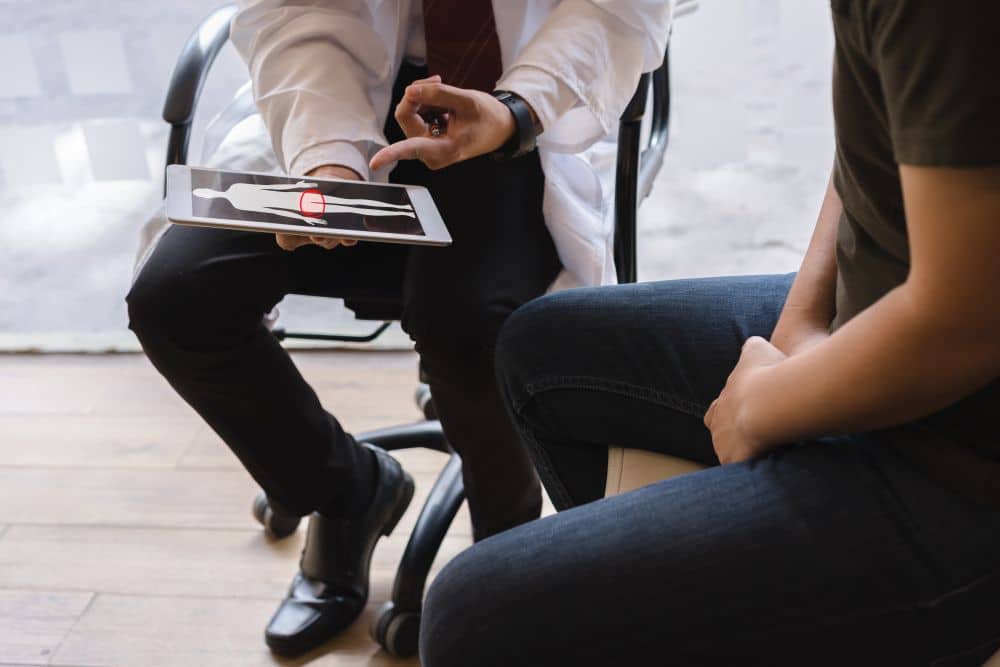Is Testicular Pain a Sign of Testicular Cancer? Understanding the Causes and How to Perform a Self-Exam
Posted on March 11, 2024 by root

Testicular pain is a concern that can affect men of all ages, bringing with it not just discomfort but also a cloud of worry about what it might signify. One of the most pressing fears is the possibility of testicular cancer. But is testicular pain truly a harbinger of this disease? Let’s delve into the causes of testicular pain, explore the types of testicular cancer, understand the most common ages it affects, and learn how to perform a testicular exam at home.
Understanding Testicular Pain
Testicular pain can stem from various causes, ranging from minor issues to more serious health conditions. Here are some common causes:
- Injuries or trauma to the testicles can cause immediate pain.
- Infections such as epididymitis (inflammation of the tube at the back of the testicle that stores and carries sperm) or orchitis (inflammation of one or both testicles, often caused by bacteria or viruses).
- Testicular torsion, a sudden and severe pain caused by the testicle twisting, which can cut off its blood supply.
- Varicocele, a swelling of the veins within the scrotum.
- Hydrocele, which occurs when fluid accumulates around a testicle.
- Hernia, particularly inguinal hernias, can sometimes cause pain that extends into the testicle.
Is Testicular Pain a Sign of Testicular Cancer?
While testicular pain is a symptom that can understandably cause alarm, it’s important to note that testicular cancer does not typically present with pain as an early symptom. In fact, testicular cancer lumps are usually painless. However, any changes in the feel or appearance of the testicles, such as a lump or swelling, should prompt a visit to a healthcare provider for further evaluation.
Types of Testicular Cancer
Testicular cancer primarily affects the germ cells, the cells responsible for producing sperm. The main types are:
- Seminomas, which grow and spread slowly and are sensitive to radiation therapy.
- Non-seminomas, a group that includes several types of cancer (like embryonal carcinoma, yolk sac carcinoma, choriocarcinoma, and teratoma) and tends to grow more quickly than seminomas.
Most Common Ages for Testicular Cancer
Testicular cancer is relatively rare but is the most common cancer in American males between the ages of 15 and 35. However, it can occur at any age, making awareness and self-examination crucial components of early detection.
How to Perform a Testicular Exam at Home
Performing a regular testicular self-exam is a simple process that can help men become familiar with the normal size, shape, and weight of their testicles, allowing them to detect any changes early on. Here’s a step-by-step guide:
- Timing: After a warm bath or shower, when the scrotum is relaxed.
- Examine visually: Stand in front of a mirror and look for any swelling on the skin of the scrotum.
- Examine by touch: Gently feel each testicle using both hands. The testicle should be smooth, with no lumps or swellings.
- Identify: You should be able to feel the epididymis, a soft, tube-like structure behind the testicle. Familiarize yourself with this so you won’t mistake it for a lump in the future.
If you find a lump, swelling, or any other changes that concern you, it’s important to contact a healthcare provider promptly. While it’s likely to be something other than cancer, a professional evaluation is necessary to rule out any serious conditions.
Conclusion
While testicular pain is not a common sign of testicular cancer, being aware of one’s body and any changes is key to early detection of potential health issues. Regular self-exams and understanding the symptoms and types of testicular cancer are essential steps in maintaining testicular health. Remember, early detection plays a crucial role in the successful treatment of testicular cancer, making awareness and proactive health checks invaluable tools for every man.